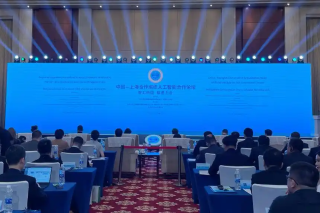Education in China
As an ancient civilization with a history of 5,000 years, China has always been attaching great importance to its education. Confucianism and the imperial examination system have a great impact on China’s education. The current strategy of rejuvenating China through science and education puts science, technology and education as China’s priorities. International exchanges and cooperation promote China’s education to a deeper and further level. Not only does it play an important role in inheriting and developing the traditional Chinese culture, but also makes tremendous contributions to the development of world civilization.
I. Status quo
At present, China's education system mainly includes pre-school education, compulsory education, special education, high school education, higher education, adult training, literacy education and private education.
Pre-school education refers to the education in kindergartens for 3 to 5-year-old children
Compulsory education is also referred to as free education, including primary and middle school education, lasting nine years generally, six years in primary school and three in middle school (“6+3 system”), yet with exceptions.
China has basically formed its own special education development pattern, with special education schools as the backbone, regular classes or special classes in ordinary schools as the main form, and sending teachers to families, homeschooling and community education as a supplement.
China’s high school education, including regular high schools, regular technical secondary schools, adult secondary technical schools,vocational high schools and technical schools, is an important part of the national education system.
China’s higher education includes academic education and non-academic education, in full-time or part-time pattern. It can also be divided into junior college, undergraduate and postgraduate education.
Adult training and literacy education: Adult education is different from ordinary full-time education. Its main purpose is to upgrade the skills and improve the qualifications of the working staff. Literacy education refers to the process of teaching the illiterate or the semi-illiterate to grasp basic skills of reading, writing and reckoning.
China’s private education, also known as non-public education, is a form of education in contrast to public education or state-run education. It refers to the schools and other educational institutions run by non-state social organizations or individuals using non-fiscal funds for the purpose of benefiting the society.
II. Achievements
At present, China has about 15,429,000 full-time teachers, 260 million students and 512,000 schools. The total investment in education in the country is CNY 3,612.919 billion. There are 2,852 higher education institutions, enrolling a total of 36.47 million students, 24,900 high schools with 40,376,900 students, 52,400 middle schools with 43,119,500 students, 190,500 primary schools with 96,921,800 pupils, and 223,700 kindergartens with 42,648,300 children.
In terms of investment in education, in recent five years, the national education program have trained 7 million teachers, with CNY 2.92 trillion fiscal fund invested. 80% of compulsory education schools are equipped with multimedia classrooms, and 91.45% with Internet access.
1. Scale of private education
There were 162,700 privately-run schools of various kinds at various levels in China, including 734 private colleges and universities, 2,225 private secondary vocational schools, 2,585 private regular high schools, 4,876 private regular middle schools, 5,859 private regular primary schools and 146,400 private kindergartens.
2. Scale of higher education
There are 2,852 higher education institutions in China, among which 2,560 are regular colleges and universities, and 292 are adult colleges and universities. In higher academic education, there are 326,700 PhD students, 1,584,700 postgraduates, 15,766,800 undergraduates, 10,486,100 regular junior college students and 6,359,400 adult college and adult junior college students.
Among the teachers of regular colleges and universities in China, the full-time teachers in colleges and universities total 1,573,000, of which 68.4% has master’s degree[l1] and 41.9% senior professional titles.
China’s higher education institutions have assigned 44,200 students and receieved 37,600 foreign students for international academic exchanges and cooperative researches which have attendees as many as 163,900. China has held 2,291 international academic conferences, with 93,500 academic papers discussed and 18,700 invited lectures given.
III. International cooperation and exchanges in education
Since 2000, China has successively established eight vice premier-level humanities exchange mechanisms: China-Russia (November 2000), China-US (May 2010), China-UK (April 2012), China-Europe (April 2012), China-France (September 2014), China-Indonesia (May 2015), China-South Africa (April 2017) and China-Germany (May 2017), which covers many areas such as education, science, technology, culture, health, sport, radio and television, media, film, tourism, women, youth and archives.
1. Inbound and outbound students
From 1978 to 2016, 4,586,600 Chinese students studied overseas and 2,651,100 returned. According to the statistics, in the year of 2016, 544,500 Chinese students went abroad to further their studies and 432,500 returned, and the international students studying in China were 442,800, among which 210,000 received academic education.
2. Sino-foreign cooperation in school operations
Until February 2017, there have been 2,522 Sino-foreign education institutions and programs in China, involving 34 countries, including Australia, UK, USA, Canada and Russia, and 1,746 Sino-foreign higher education institutions, including 785 colleges and universities in China and 961 in foreign countries.
3. Confucius Institute
Until December 2016, China had established 511 Confucius Institutes in 140 countries and regions, opened 1,073 Confucius Classrooms, with 2.1 million students and 46,000 part-time and full-time faculty members in 2016.
IV.Future development
Improving the quality of education in China in an all-round way and making significant progress in education modernization are the main goals of China’s educational development in the future. The main tasks include strengthening students’ social responsibility, innovation, entrepreneurship and hands-on ability; encouraging the development of universal pre-schooling; promoting the balanced development of compulsory education; universalizing high school education; speeding up the development of modern vocational education; transforming the qualified undergraduate institutions into application-oriented colleges and universities; adopting a balanced approach in terms of building world-class universities and disciplines; improving the ability of colleges and universities in teaching and innovation; speeding up the building of a learning society; and making great efforts in promoting educational equality.
The supplementary measures to achieve the main objectives include strengthening the training of teachers, deepening the reform of the examination and enrollment system, improving the education investment mechanism, promoting and regulating the development of private education, promoting education informatization, strengthening international cooperation and exchanges in education, and deepening the innovation and entrepreneurship-oriented educational reform.

Copyright ©
Tianjin Municipal Government. All rights reserved. Presented by China Daily.
京ICP备13028878号-35



